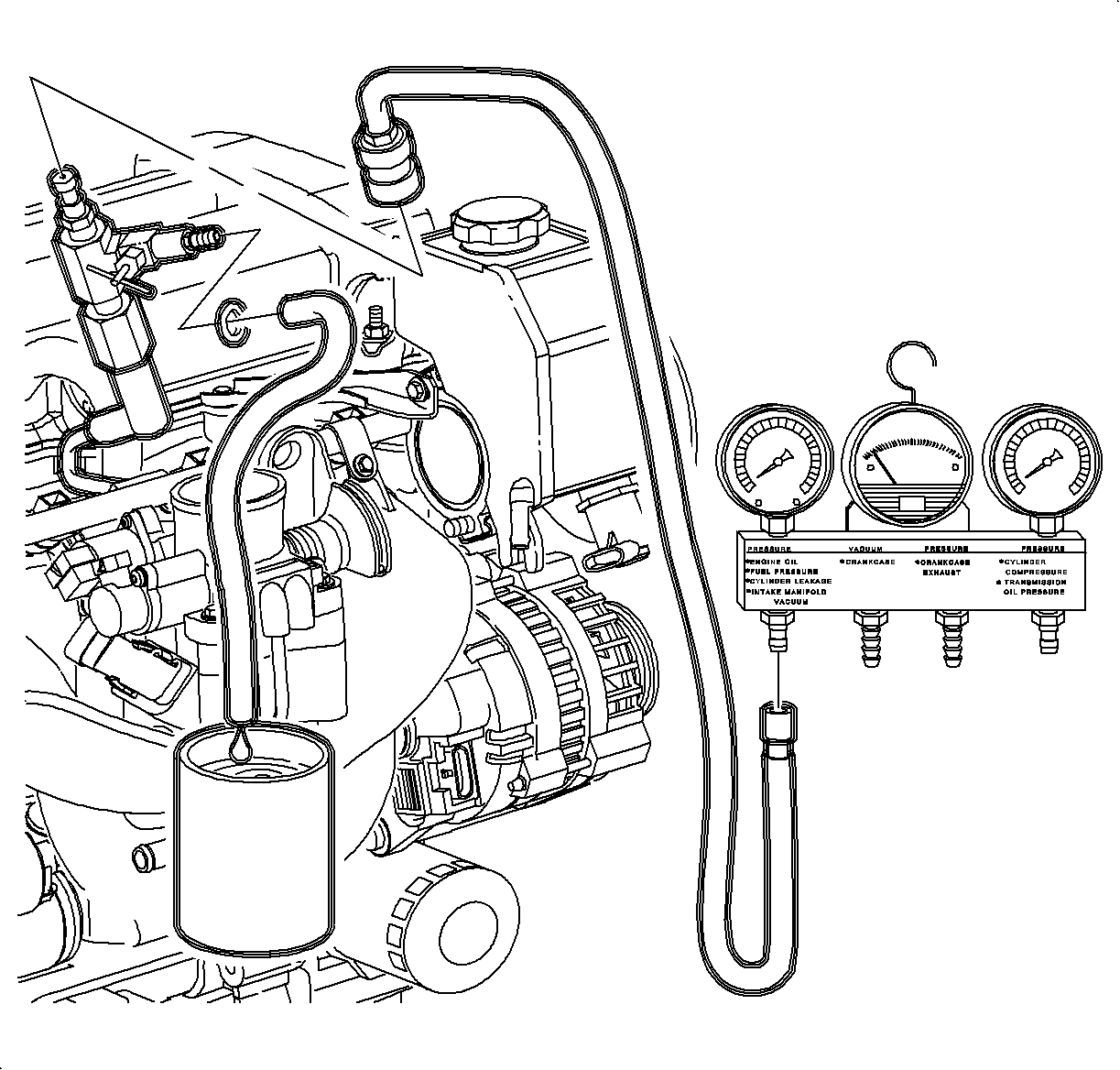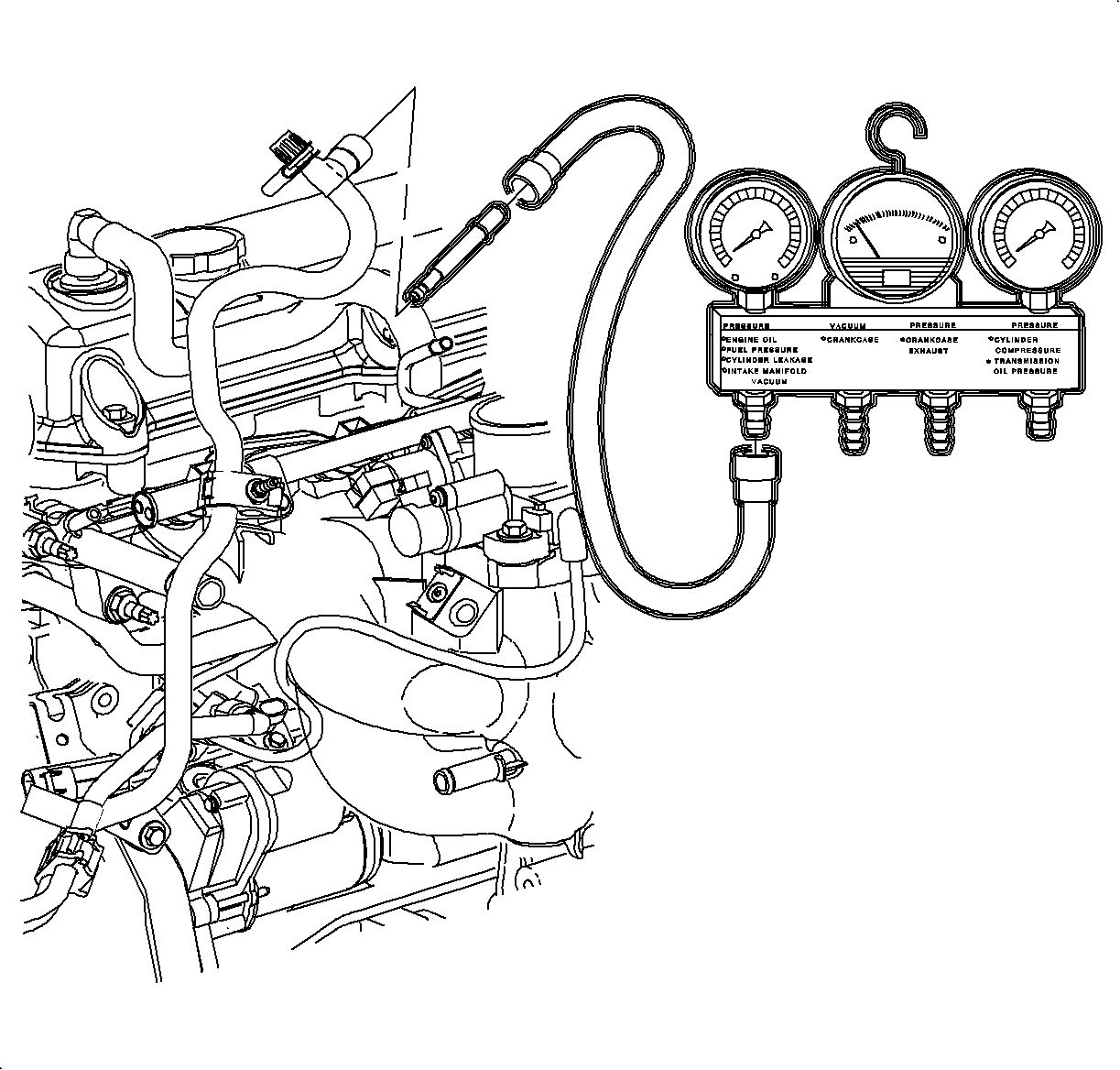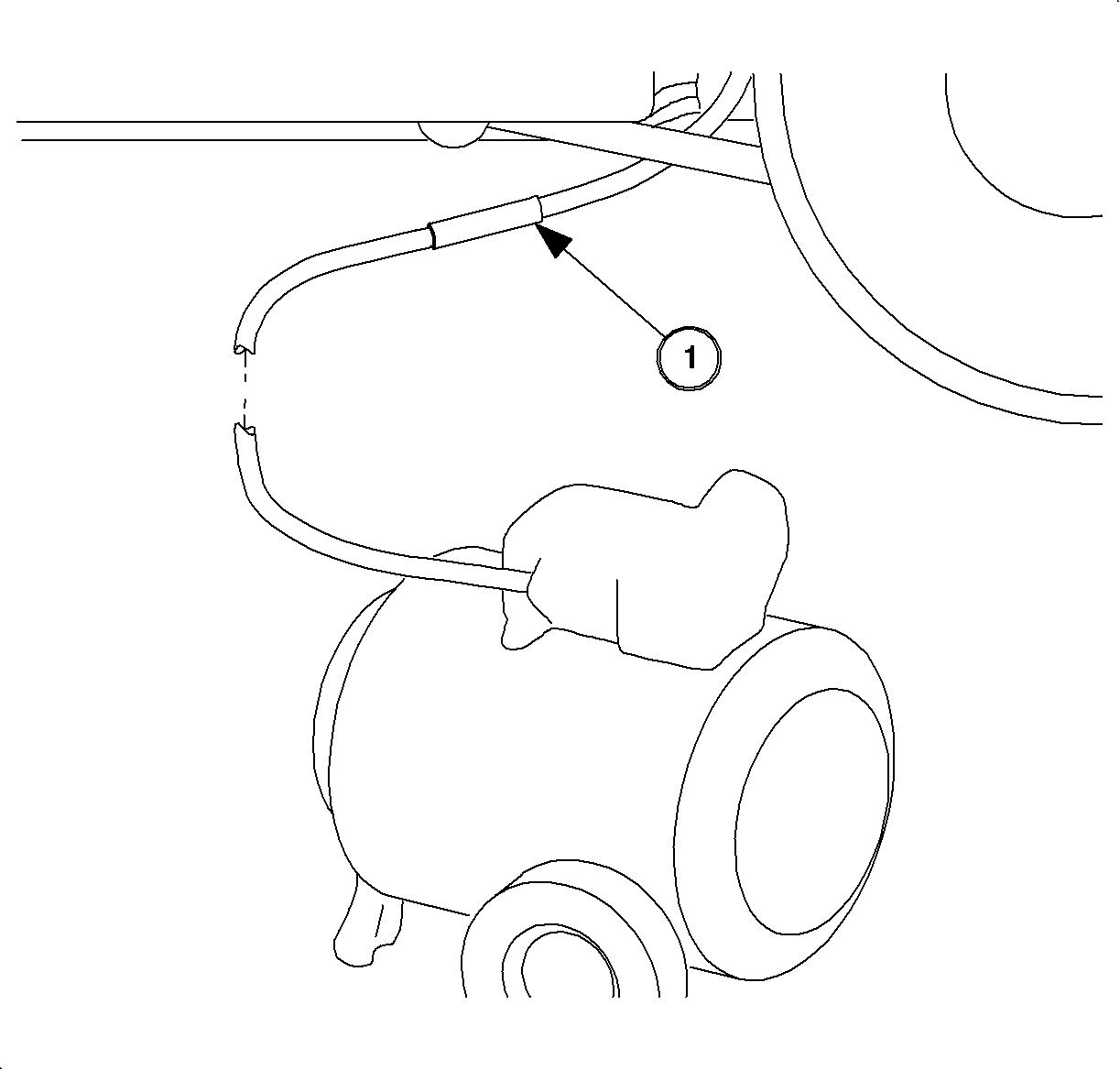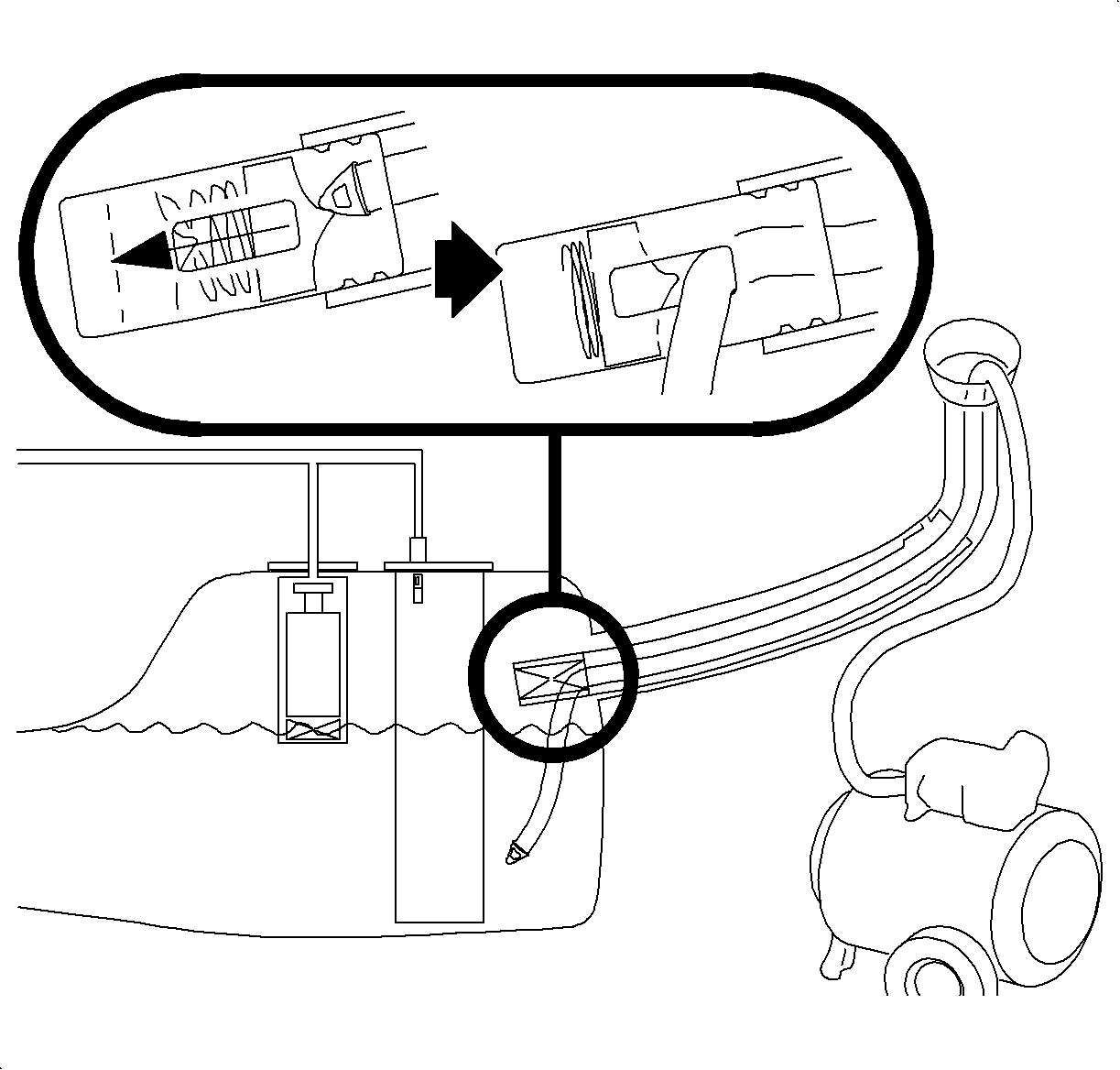Tools Required
| • | SA9127E Gage Bar Set |
| • | SA9127E-7 Fuel Flow/Pressure Adapter |
| • | SA9804E Fuel Tank Drain Hose |
For any operation requiring removal of the fuel tank, there should be no more than 11.5 L (3 gal) of fuel remaining. This minimizes the weight of the assembly and eases handling. The fuel level can be determined by reading the fuel level gage. A reading below 1/4 full indicates that no more than 11.5 L (3 gal) remain.
Using the Fuel Pump
Caution: Do not allow smoking or the use of open flames in the area where work on the fuel or EVAP system is taking place. Anytime work is being done on the fuel system, disconnect the negative battery cable, except for those tests where battery voltage is required.
Using the fuel pump to drain the tank is the easiest procedure if the pump is operable. The fuel can be pumped out with the vehicle on the ground or on the hoist.
On the Ground
- Remove the air cleaner inlet tubing from the throttle body.
- Relieve the pressure in the fuel pressure at the fuel pressure test port. Refer to Fuel Pressure Relief .
- Disconnect the fuel feed line at the fuel rail and install the SA9127E into the fuel line.
- Connect a suitable fuel hose to the adapter fitting and connect the other end of the hose to a certified fuel handling cart.
- Connect the Tech-2 to the vehicle and turn the ignition ON.
- Energize the fuel pump using the scan tool. Refer to Fuel System Diagnosis .
- Pump out all of the fuel, or until no more than 1/4 tank remains.

Caution: Fuel supply lines will remain pressurized for long periods of time after the engine is shutdown. This pressure must be relieved before servicing the fuel system.

Caution: Whenever fuel line fittings are loosened or removed, wrap a shop cloth around the fitting and have an approved container available to collect any fuel.
Caution: Never drain or store fuel in an open container due to the possibility of fire or explosion.
On the Hoist
- Remove the air cleaner inlet tubing from the throttle body.
- Connect the Tech-2 to the vehicle diagnostic connector and turn the ignition ON.
- Relieve the pressure in fuel system at the fuel pressure test port. Refer to Fuel Pressure Relief .
- Raise the vehicle on a hoist to a comfortable working height, keeping the scan tool outside of the vehicle and accessible from under the car.
- Disconnect the fuel feed line at the inlet to the filter/regulator (5/16-in line).
- Install a 5/16 x 1/4-inch quick connect (1) adapter from the SA9127E-7 into the fuel feed line, connect a suitable drain hose to the other end of the adapter, and connect the drain hose to a certified fuel handling cart.
- Energize the fuel pump using the scan tool. Refer to Fuel System Diagnosis .
- Pump out all of the fuel, or until no more than 1/4 tank remains.

Caution: Fuel supply lines will remain pressurized for long periods of time after the engine is shutdown. This pressure must be relieved before servicing the fuel system.

Caution: Whenever fuel line fittings are loosened or removed, wrap a shop cloth around the fitting and have an approved container available to collect any fuel.

Fuel Pump Is Inoperative
If the fuel pump is inoperative, the tank can be drained by siphoning from the tank. A suitable means is through the fuel filler pipe with the correct type and stiffness of tubing as used with the SA9804E .
- Disconnect the negative battery cable.
- Open the fuel filler door and remove the gas cap.
- Insert the fuel tank drain hose guide/funnel into the fuel filler pipe.
- Insert the SA9804E into the guide funnel and into the fuel filler pipe. Some resistance may be encountered when the tip of the siphon hose reaches the inlet check valve. Repeated probing may be necessary to slide the hose tip through the check valve cage.
- Begin the fuel siphoning process.
- Remove the fuel tank drain hose from the fuel filler pipe after draining is complete.
Notice: Do not attempt to insert any other type of siphon hose or tube into the fuel filler pipe. The design of the inlet check valve at the end of the fuel filler tube restricts the insertion of a hose and, most importantly, prevents the removal of this hose. See Fuel Inlet Check Valve in this section. If the siphon hose becomes stuck in the check valve, the fuel filler pipe will not be able to be removed from the fuel tank without damage to the fill pipe or fuel tank.

Important: The fuel tank drain hose will reach the bottom of the tank within about 25 cm (10 in) of the end fitting, and tag. When connecting the fuel tank drain hose to another length of hose connected to the fuel drain tanker: DO NOT insert the fuel tank drain hose into the fill pipe funnel past the tag at the fitting end. If inserted too far, the upper portion of the fuel tank drain hose may pass through the check valve cage and then jam on attempted removal.
Important: The fuel flow rate from the fuel tank drain hose will range from 1.1 L/min (0.3 gal/min) up to 3.8 L/min (1 gal/min), depending on whether it is gravity siphoned or siphoned with an air-powered pump.
